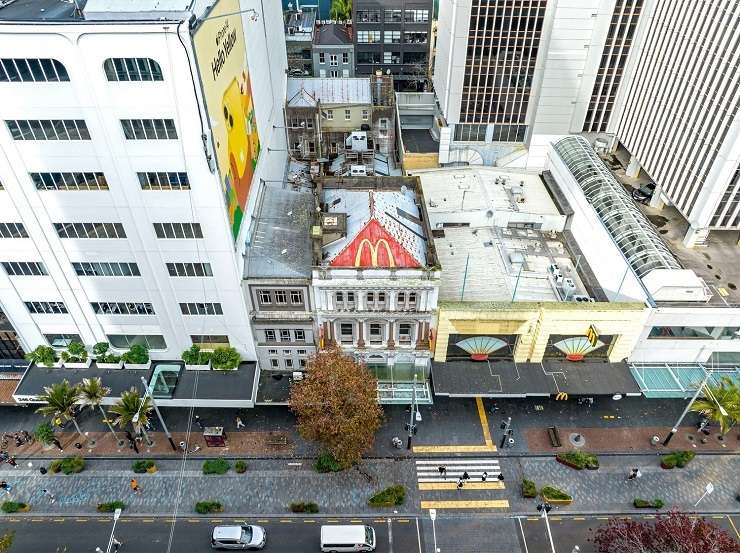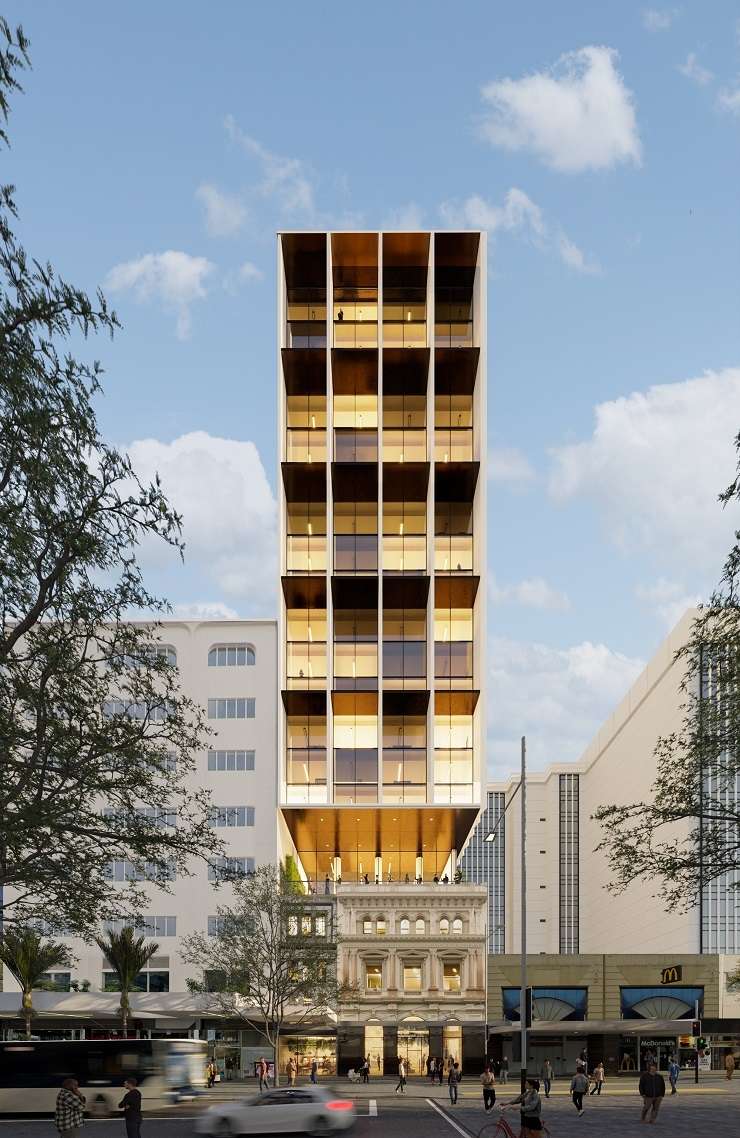McDonald’s is selling the home of its first ever Auckland restaurant.
The iconic bank building on Queen Street, where the golden arches first made an appearance more than 40 years ago, is on the market for sale.
The former ASB Bank Victorian building at 256-270 Queen Street, along with the building beside it and two others to the rear on Lorne Street, are being sold by real estate agency Bayleys, with expressions of interest closing June 29.
The city outlet moved down the street to 268 Queen Street in October 2020, closing the doors on the remarkable heritage site.
Start your property search
Bayleys agent Layne Harwood, who is selling the buildings with Alan Haydock and Ian Hall, said the buildings with a CV of $15 million have sat empty and derelict since then, but McDonald’s were keen to quit the property after sitting on the buildings since Covid.
McDonald’s bought the 883sqm site for their first Auckland operation in 1977 from entertainment and real estate conglomerate Kerridge Odeon. Their first restaurant, in Porirua, had opened the year before.
Read more:
- Tony Alexander: There is a very good chance now of an early cut in interest rates
- ‘What the hell is going on?’: 213 bids on run-down home in South Auckland
- What the Reserve Bank’s interest rate surprise means for house prices
The company owns over 90% of its sites, Harwood said. Around the world, it is well known that real estate – not burgers – is McDonald’s core business as the franchisees selling the burgers provide guaranteed rental returns on their 36,000 locations in over 100 countries.
“It will be sold, McDonald’s will meet the market. It’s difficult to acquire development land in Queen Street, and with the bank on the front this is quite different,” he said, adding that it has been a while since Queen Street development opportunities came to market.

The former bank building of the original McDonald's restaurant on 256-270 Queen Street has heritage protection for its façade and some interior features. Photo / Supplied
The cluster of McDonald’s buildings date from 1884, 1890 and around the 1940s, and four parts have Heritage New Zealand Category 1 protection: the façade, a spiral staircase and internal boardroom, which weren’t part of the fast-food outlet, and the ornate pressed steel bank chamber ceiling that added an unexpected sense of grandeur to a late-night Macca’s feed.
“Any redevelopment needs to consider their retention. Redevelopment will require partial demolition and a carefully managed refurbishment programme that includes seismic upgrades, while meeting the heritage requirements of the Queen Street buildings, in part,” Harwood said, adding that he could envisage the heritage part of the building making a beautiful entrance for a hotel.
With an earthquake rating of 11% of new building standards, the building is not currently allowed to be occupied, he said, but the rarity value of the 883sqm site will draw interest.

An artist’s impression of how the building could be developed as the mid-town section of Queen Street becomes a hub for apartments and hospitality. Photo / Supplied
The agent says an integrated hotel and apartment complex could be established on the site, satisfying Aucklanders’ desire to preserve the city's heritage. Their modelling shows a floor area of 11,479sqm, which could be increased, and a building height of around 20 levels.
Concept plans by Ignite Architects that show a 15-level hotel tower above street level hospitality venues give buyers an idea of the redevelopment possibilities that protect the heritage features and incorporate them into new parts of the building. Harwood said.
And unlike the heritage St James Theatre site on the top of Queen Street, which is riddled with complexities and has had more than one developer abandon restoration or redevelopment, the McDonald’s building is a manageable size for a developer, Harwood said.
He said that while the locus of corporate offices was moving downtown, closer to the water, the mid-town precinct was seeing more hotel, apartment and commercial development. Hospitality and entertainment hubs will be helped by the City Rail Link’s huge mid-town Te Waihorotiu (Aotea) station entrances on Victoria and Wellesley streets, opening in 2026, and the Symphony Centre’s office and apartment complex above the new station at the corner of Mayoral Drive and Wellesley Street, he said.
“In five to 10 years, this part of the CBD will be completely transformed,” said Harwood.
“We expect strong interest from developers with heritage property experience."
Records show it has been a while since other Queen Street properties on bigger sites changed hands. The iconic mid-century buildings of 246 Queen Street on 1173sqm, now refurbished into stylish offices by Fearon Hay architects, changed hands in 2015 for $35 million, while the heritage building on 131 Queen Street has been transformed by Krukziener Properties after selling in 2016 for $52.3m.
- 256-260 Queen Street, in Auckland Central, is for sale by way of expressions of interest










































































